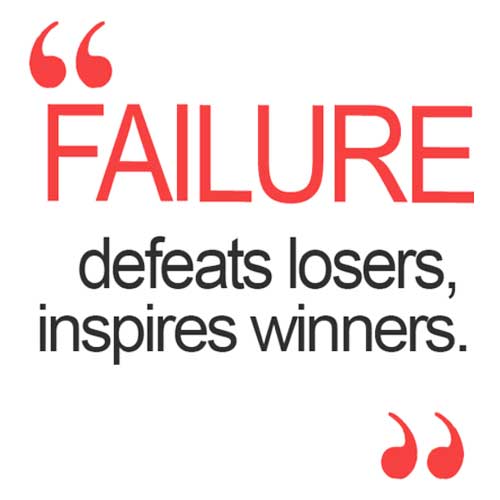
by Julia Felton | Jun 24, 2015
As a fellow entrepreneur I understand that you went into business because you just love what you do. I bet you are super creative and loved the excitement and buzz of starting your own company. With loads of ideas and energy you were just what the business needed at that time. But, assuming your business has been a success, are you still the right person to be running the business. Maybe it is time to fire yourself?
So why do I say that? Well time and time again I come across successful entrepreneurs still trying to run their business as a start up when in fact it is an established business and leading it requires a very different skill set.
Just as each year goes through the five seasons and has a natural rhythm to it so does your business. Businesses follow cycles as illustrated in the Five Energy Dynamic below, which is why it is rare to find the same companies being the best performers, year on year.
 When a business is just starting out it needs lots of Wood Energy for creating the vision and coming up with the strategy. Wood energy is Spring type energy, it gets things moving. Then the business moves into a phase of growth, represented by Summer and Fire energy. Here you find companies acquiring market share and presence by connecting and collaborating with others.
When a business is just starting out it needs lots of Wood Energy for creating the vision and coming up with the strategy. Wood energy is Spring type energy, it gets things moving. Then the business moves into a phase of growth, represented by Summer and Fire energy. Here you find companies acquiring market share and presence by connecting and collaborating with others.
Then business moves into the late summer phase represented by Earth energy and consultation. This is a time ,when a business established in their niche, needs to focus on looking after customers. Then the business moves into autumn (Metal energy) which is all about consolidation and calculation – getting more from the business by closely monitoring the numbers. Then the business moves into Winter and Water energy. At this point the business typically reflects back on what has and hasn’t worked. It begins to look for ways to expand its product offering with product extensions and so the business moves back into creation mode and the Spring energy. It’s a virtuous circle
So what season is your business in? The best way to figure this out is to examine which season you have just passed through. If you have a great product that has proven itself in the market, you are out of Spring and into Summer, where you will be focusing on building your market.
If you have many new customers and sales are coming in easily, you are out of Summer and into late Summer focusing on serving your customers well. If your customers are happy and your team members are settled, you are out of late Summer and into Autumn, where your focus will be on analyzing and measuring how the business performed and then you move into Winter where you will reflect on what occurred and seek ways to enhance performance before moving back into Spring
The big error that many business owners make is that because they fail to realize when they have moved from one season to the next, they keep adopting the same old strategies when a new approach is needed. Oftentimes the wrong type of leader is running the business in the wrong season and when this occurs the results can be disastrous.
So, I urge you to honestly look at your business and consider whether you are the right person to be leading the business through this phase of its development. And if not, be brave, swallow your pride, and fire yourself from the CEO role because the consequences could be dire for your business if you don’t.

by Julia Felton | Apr 15, 2015
This week as I’ve been preparing for the Building Relationships To Build Your Business Workshop which I am hosting this weekend, I got to thinking about the relationship between trust and respect. Trust and respect are foundations of building great relationships whether in life or business, but how do these apply to leaders?.
Can you trust someone you don’t respect? Can you respect without trust? In all my years of being in business I can’t recall anyone that I really respected and who I didn’t trust. Although recently I did come across a stallion horse that I certainly respected for his power and presence, but to be honest I didn’t really trust him. In fact he intimidated me, and I was a little afraid, however I did trust myself that I knew enough to keep me safe by keeping him out of my personal space.
So whilst trust and respect can exist independently, it’s when they co-exist together that something magical happens. It is definitely a case of 1+1=3.
So let’s be clear on what are trust and respect. Trust is defined as reliance on the integrity, strength, ability, surety, etc., of a person or thing whilst respect is defined as a deep admiration for someone’s abilities, qualities or achievements.
So how do you build trust and respect with others? Here are six practices you can engage with:
1. Model The Way
“What you do speaks so loudly I cannot hear what you say. “ ~ Ralph Waldo Emerson
Both trust and respect are earned. The fastest way to earn them is to give them: Show others trust, give others respect.
2. Keep Your Commitments
Do what you say you will do. So if you agree to follow up with someone then make sure you do it. This builds credibility and shows you are reliable. And if for some reason circumstances change make sure you circle back and explain why you can no longer keep this commitment and ask to be released from your original promise.
3. Listen To Communicate
Being a great communicator means listening with your mind as well as your heart. What is being communicated by what isn’t being said? Listen to people and consider what they have to say with an open mind. Great communicators address both the “why” and the “how” of the situation. Trust your gut and learn to ask great questions.
4. Prepare for Confidence
Respect is born through the competence you show, one of the 5 pillars of trust. (The 5 pillars are Caring, Commitment, Consistency, Competence and Communication) Have the confidence born of knowledge and experience. When you speak, know what you are talking about. Remember, though: confidence is not arrogance; a confident leader is willing to admit his mistakes; hiding them is a sign of duplicity.
5. Make People Feel Safe
Create an environment where everyone feels that they can express their viewpoint. Respected leaders acknowledge they don’t know everything and they can learn a lot from other people. Keep an open mind and appreciate that everyone has something to teach you.
6. Lead From The Front
Do you want trust and respect from others? Start by trusting and respecting yourself. It means not putting yourself down when you make a mistake; own up to it and move on. Let yourself take risks based on your own values and strengths. Listen to that “inner voice” guiding your decisions.
What else are you doing to build trust and respect? I’d love to hear as the same principles apply whether you are building trust and respect with prospects, clients, suppliers or even your horse.

by Julia Felton | Mar 17, 2015
Thomas J. Watson, the founder and first president of IBM said: “Failure is a teacher – a harsh one, perhaps, but the best… That’s what I have to do when an idea backfires or a sales program fails. You’ve got to put failure to work for you … you can be discouraged by failure or you can learn from it. So go ahead and make mistakes. Make all you can. Because that’s where you will find success. On the far side of failure.”
I know when I was starting out in business I used to dread getting things wrong and having projects fail. I used to think that failure was something bad, to be avoided, but along the way I have begun to realise that my best lessons are learnt when I try something and it doesn’t turn out as planned. In effect I’ve failed but the feedback I get is priceless and it helps me calibrate my offering and do something different.
Recently I read an article about the African impala. They can jump to a height of over 10 feet and cover a distance of greater than 30 feet and yet these magnificent creatures can be kept in an enclosure in any zoo with a 3 foot wall. The reason is that these animals will not jump if they cannot see where their feet will land.
This is a lot like humans. Many of us will not live up to our full potential and achieve all we want to as we are afraid to take a risk. We are afraid to fail as society has conditioned us that failure is bad. That was certainly the messaging that I got as a chlld, however failure can be one more step on your road to success – you just have to turn it around in a positive direction. Failure can push you harder to succeed. Failure can strengthen your determination to overcome obstacles. Failure can make you braver in the face of opposition. Failure can help you learn what you need to do in order to succeed. Failure can teach you what your limitations are – and your strengths. Failure can encourage you to change your strategy.
“Failure is not an option” became a popular catchphrase after the release of the movie Apollo 13. Failure happens, but when you’re responsible for the people working for you, you have to do everything you can to guard against it.
As a leader, devote yourself to avoiding these crucial failures in leadership.
- Disconnecting from people. Don’t get so caught up in strategy and planning that you forget to talk to the people who work for you. Most of the time, they know more than you about how things work from the ground level, and their insights can be invaluable.
- Doing too much. Delegate appropriately so you don’t get overwhelmed and lose sight of the big picture. When you hire, look for people who can perform aspects of your job as well as or better than you can. Your role is complicated enough without adding tasks that your team should be able to handle.
- Avoiding risk. Play it safe, and your organization will never grow. That doesn’t mean being foolhardy with your organization’s assets. Seek opportunities everywhere, and be willing to commit resources wherever you’ve got a reasonable chance of success.
- Exhaustion. Take care of yourself, physically and mentally. Eat well, exercise, and take time off so you can stay fresh as you confront the day’s challenges. Pushing yourself to the brink will only increase everyone’s anxiety.
- Falling in love with authority. You’re the boss, not a monarch ruling by birthright. Don’t rely on your title, and the volume of your voice, to get employees to do what you want. Base your decisions on your experience and judgment, and be willing to listen to other points of view instead of assuming that only you know what’s right.
When J. K. Rowling, author of the phenomenally successful Harry Potter series, had been out of college for seven years, she found herself at a dark juncture in her life. At that time, she says, she had failed in life on an epic scale. “An exceptionally short-lived marriage had imploded. I was jobless, a lone parent, and as poor as it is possible to be in modern Britain without being homeless.”
In short, Rowling says she was the biggest failure she knew. And while she says there is nothing ennobling about being poor, she believes she reaped benefits from her failures. Failure, she says, stripped away all the inessential aspects of her life. She stopped pretending to be anything other than herself, and it was then that she began to earnestly pursue the only work that mattered to her. It was not, she says, the fairy-tale transformation to success so often written about her in the media.
And one thing I have learnt is that becoming successful – whatever that means for you – is never something that happens overnight. Despite all the media hype success takes hard work because it takes 10,000 hours to perfect your craft. So imagine the opportunity for failure along the way and embrace this and learn from the experience because this will help accelerate your success.
So what leaps of faith will you take today to move your business to the next level?

by Julia Felton | Feb 24, 2015
In a recent article the Harvard Business Review cited the following as traits of innovative leaders. I’m curious what you think about these traits and are there any you would add.
Many organisations would like their leaders to create more innovative teams. But how exactly should they do this? Most highly innovative leaders can often find it difficult to pinpoint what accounts for their skill. Research carried out by US –based leadership development consultants Jack Zenger and Joseph Folkman identified 10 distinctive behaviours that set innovative leaders apart.
These leaders:
- Display excellent strategic vision. The most effective innovation leaders could vividly describe their vision of the future
- Have a strong customer focus. They networked with clients and asked incessant questions about their needs and wants.
- Create a climate of reciprocal trust. They initiated warm, collaborative relationships with the innovators who worked for them.
- Display fearless loyalty to doing what’s right for the organisation and customer. Pleasing the boss took a back seat to doing the right thing for the project.
- Put their faith in a culture that magnifies upward communication. These leaders were often described as projecting optimism, full of energy, and always receptive to new ideas.
- Are persuasive. They presented ideas with enthusiasm and conviction, and the team willingly followed.
- Excel at setting stretch goals. They set goals that required people to go far beyond just working harder but required that they find new ways to achieve a high goal.
- Emphasize speed. These leaders believed that experiments and rapid prototypes were preferred to lengthy studies by large committees.
- Are candid in their communication. These leaders were described as providing honest, and at times blunt, feedback.
- Inspire and motivate through action. This comes from a clear sense of purpose and meaning in the work.
So do you have the skills and mindset as a leader to create innovative teams? I’d love to hear if you’d focus on anything different.

by Julia Felton | May 27, 2014
So bringing a horse in the workplace might be a bit of a stretch, not to mention a little messy! However, the growing field of emotional intelligence (EI) and neuroscience, highlights the need for leaders to develop solid interpersonal and relationship skills in order to become proficient in harnessing the complexities of the modern world.
In fact a recent report by Deloitte Consulting LLP (my old employer!) entitled Global Human Capital Trends 2014 reveals that 86% of companies cite developing leadership capability as the top challenge they are facing, alongside employee retention and engagement, the re-skilling of HR and talent acquisition.
So why are horses such great teachers of leadership? To my mind it is because leadership is fundamentally changing. The old paradigm of command and control will no longer work in the workplace. We are leaving the information era and entering the collaboration era and horses are masterful at showing us how to work together in unity and harmony to achieve results. They also engage actively in shared leadership which will become more prevalent as we move forward.
With the avalanche of information out there it is simply impossible for one person to know it all. Everyone in the team needs to share responsibility for ensuring that the business meets its goals. And this this is what the herd models for us so well. They share the same vision for survival and safety and each herd member is responsible for looking out for danger. They have to be alert at all times and be focused on the goal. Any horse that fails to pay attention is reprimanded and often driven out of the herd for a short period of time. (Trust me it is fearful place for a horse to be alone and excluded from the herd with no-one to share the burden of responsibility with.)
And yet this is what I witness in organisations a lot, except for it is the leader who often feels alone and isolated from the rest of the team. They are left on the fringes and are not connected to the rest of the herd. The result is mis-communication, feelings resentment and frustration as goals are not met.
So how does Horse Assisted Coaching work and why is it so powerful?
In our new connected era what is apparent is that success does not come entirely from what you do – although taking action is always important – but it comes from who you are being. How are you showing up in the world? What type of leader are you? Horses teach us these important soft skills that are vital for business success. In fact I estimate that 80% of business success comes from how you show up as a leader for your business. Are you aligned and congruent? Are you passionate about what you are doing? What beliefs do you hold about success?
Horses help you develop these softer skills controlled by the limbic system of the brain (the emotional centre). Horses communicate mainly via body language and operate solely from their emotions. They don’t care if you are the CEO or the Office Junior, what they care about is what you are bringing to the relationship. Having a 600lb horse in front of you tends to bring up ‘real’ emotions for both parties! This could be known as ‘real-play’ rather than ‘role-play’.
As a participant in a Horse Assisted Coaching session you will performs certain ground activities which will evoke a variety of thoughts (productive and self-limiting) which in turn produce certain emotions (feelings), this is then mirrored in your body language, which the horses pick up on (from up to 1km away!). As the horses are at liberty (free of reins, head gear and rider control) they have the option to react naturally to the participant. This is the moment of instant feedback from the horses mouth!!.
Participants are able to try out different approaches and ways of managing themselves and the other (in this case the horse) in each situation, giving them an opportunity to experiment with the most effective behavioural response (adaptive behaviours). As success is found, confidence builds and links are made to life outside the paddock, which then raises the probability of using the new adaptive behaviours in the workplace.
All these programs are delivered in a non-threatening environment where the focus is to support each participant to achieve better outcomes in their interpersonal interactions and develop an awareness of themselves, others and the complexities within the workplace.
Business Horsepower combines leading theory and profiling tools with innovative Horse Assisted Coaching in order to deliver the most effective emotional intelligence development programs available and create more leadership bang for your buck!
Put simply you get more effective results when you use horsepower!
Note: If you are based in the UK talk to me about some special funding that is available for developing leadership skills in your company.

by Julia Felton | Feb 18, 2014
Given that this is the Year of The Horse, I’ve made a decision that in 2014 I need to become more visible and bring the amazing work that horses teach us into the world. It continues to amaze me how much my horses teach me about business on a daily basis. The lesson that the herd has been reinforcing this week is the power of FOCUS and clarity.
In fact the lesson only landed for me when I was chatting with one of my coaches. Last year she had come and experienced a Horse Assisted Coaching session with me, which she still raves about. When we were chatting about her experience on Sunday she reminded me that when she was leading Charlie, my race-horse I had told her “Just look where you want to go and he will follow”. Of course when she had clarity and focus Charlie followed, but when she was unclear on where she wanted to go, Charlie just took over and did his own thing, invariably eating the grass.
Wow, how like that is business. When as a business owner you lack focus. clarity and a vision of where you want to lead your business it becomes confused and like Charlie finds excuses to go off and eat grass. In fact I have observed when I lack focus my business takes on a life of its own and manages to spiral out of control. My business ends up leading me rather than the other way around. And that is not a great place to be as you become reactive to the situation around you. And this constant reacting creates stress and does not help you achieve the life-style that you want.
The only solution is to have a plan. A vision of where you want to go. You wouldn’t get into a car to drive to a meeting without knowing where you were heading. If you didn’t know the destination it is certain that you would fail and not get there. This is why having a plan in business and in life is so vital. Beware however of becoming fixated with the plan, you need to adopt a flexible approach to navigate the obstacles that will surely come up along the way. If we take the car journey example again, if you decide to drive to Scotland you will hopefully have an idea of the route you want to take but if the road is flooded you would have to deviate. To continue on blinded by the flood warnings would be a recipe for disaster.
So do you have a plan for your business and life?. Do you have a clear vision of where you are heading? If not I strongly suggest you create one. You can write out your vision, draw it, collage it, whatever works for you. I find vision boards work well for me.

by Julia Felton | Jan 27, 2014
It doesn’t matter what you do in life staying FOCUSED is paramount to ensure your success. Steve Jobs, the founder of Apple, had laser-like focus and cites staying focused as one of the key leadership skills any business owner must have. Staying focused also means that often you need to streamline your offering. According to Jobs it is better to do a few things really well rather than loads poorly. Can you think of a time when you have experienced a mediocre product or service because the company was distracted by too many competing priorities. Success will always elude you until you get focused.
At a Garden Party in 1994 William Gates II (the father of MicroSoft founder Bill Gates III) posed this question to his distinguished dinner guests who were at the time the two richest men in America:
“What factor do you feel was most important to getting where you’ve gotten in life?”
Both guests, Warren Buffett and Bill Gates replied focus.
Everyone knows focus is vital for achieving success. But how do you get focus? And once you have it, how do you keep it?. The recipe for focus has two ingredients.
- The first ingredient is clarity about what you want to do. No surprises here. When people talk about defining specific goals; casting a clear vision; or describing what success looks like they are talking about variations on this one critical point.
- The second ingredient is killing the other things you also want to do. This second ingredient is far less obvious, and far more forgotten. Our natural tendency is to assume that if we just get really clear about what we want to achieve that the seas will part and distractions will magically evaporate. That’s the positivist approach. Reality calls for a reductionist approach.
In an interesting study, the NYU psychologist Peter Gollwitzer found that writing action plans in a “distraction-inhibiting” way is more effective at keeping us focused than writing the plans in a “task-facilitating” way. For example, let’s say your goal is to reach a certain sales target for the week. To achieve that goal, you know you that you need to start your day by making sales calls right off the bat. So, you might set a calendar reminder for yourself that says “the first thing I will do is make 3 sales calls to customers A, B, and C!”
The problem is that this crystal clear “go get em’!” plan doesn’t say anything about the emailing, water cooler chats, and Facebook status updates that will compete for your attention first thing in the morning. Gollwitzer’s research suggests that the best approach to distraction is not doubling your efforts toward the goal, but preemptively naming and avoiding the likely distractions.
I’ve started applying this to my own daily habits and it’s working wonders. For example, when I need to focus on writing this newsletter I write “NO EMAIL!! Write your ezine” and then I turn my phone and email off to ensure that I get no distractions.
As Steve Jobs noted “Deciding what not to do is as important as deciding what to do”. So my question to you today is what will you say No to, in order to stay focused on what you really want and rein in that business chaos.

by Julia Felton | Nov 21, 2012
“The greatest source of unhappiness comes from inside.” —Jim Rohn
If you want to be a leader who attracts quality people, the key is to become a person of quality yourself. Leadership is the ability to attract someone to the gifts, skills, and opportunities you offer as an owner, as a manager, as a parent. I call leadership the great challenge of life.
What’s important in leadership is refining your skills. All great leaders keep working on themselves until they become effective. Here are some specifics:
Learn to be strong but not rude. It is an extra step you must take to become a powerful, capable leader with a wide range of reach. Some people mistake rudeness for strength. It’s not even a good substitute.
Learn to be kind but not weak. We must not mistake kindness for weakness. Kindness isn’t weak. Kindness is a certain type of strength. We must be kind enough to tell somebody the truth. We must be kind enough and considerate enough to lay it on the line. We must be kind enough to tell it like it is and not deal in delusion.
Learn to be bold but not a bully. It takes boldness to win the day. To build your influence, you’ve got to walk in front of your group. You’ve got to be willing to take the first arrow, tackle the first problem, discover the first sign of trouble.
You’ve got to learn to be humble, but not timid. You can’t get to the high life by being timid. Some people mistake timidity for humility. Humility is almost a God-like word. A sense of awe. A sense of wonder. An awareness of the human soul and spirit. An understanding that there is something unique about the human drama versus the rest of life. Humility is a grasp of the distance between us and the stars, yet having the feeling that we’re part of the stars. So humility is a virtue; but timidity is a disease. Timidity is an affliction. It can be cured, but it is a problem.
Be proud but not arrogant. It takes pride to win the day. It takes pride to build your ambition. It takes pride in community. It takes pride in cause, in accomplishment. But the key to becoming a good leader is being proud without being arrogant. In fact I believe the worst kind of arrogance is arrogance from ignorance. It’s when you don’t know that you don’t know. Now that kind of arrogance is intolerable. If someone is smart and arrogant, we can tolerate that. But if someone is ignorant and arrogant, that’s just too much to take.
Develop humor without folly. That’s important for a leader. In leadership, we learn that it’s okay to be witty, but not silly. It’s okay to be fun, but not foolish.
Lastly, deal in realities. Deal in truth. Save yourself the agony. Just accept life like it is. Life is unique. Some people call it tragic, but I’d like to think it’s unique. The whole drama of life is unique. It’s fascinating. And I’ve found that the skills that work well for one leader may not work at all for another. But the fundamental skills of leadership can be adapted to work well for just about everyone: at work, in the community, and at home.
Article by Jim Rohn

by Julia Felton | Nov 14, 2012
I came across this 1928 article (anonymous) called ‘10 Ways to Kill a Team’. I smiled as a I read it and thought you’d enjoy:
- Don’t go to team meetings. Complain about the inconvenience of scheduling – place – time.
- If you do go, go late and offer a creative excuse. Do create distractions when arriving.
- If the weather doesn’t suit you, don’t even think of going. It’s not convenient anyway.
- If you attend, find subtle fault with the work of the team leader and team members.
- Never accept leadership as it is easier to criticise than to do things and take the heat.
- Get sore if you are not appointed to special teams, but if you are, don’t participate.
- If asked by the team leader for your opinion, don’t give it – complain after the meeting.
- Do the minimum, when others jump in to help, complain that a clique runs the team.
- Don’t pay your dues or coffee / birthday / anniversary fund collections, or pay very late.
- Don’t recruit new members, “Let George do it”. Complain about quality and production.
Do you know anyone who does these things?!
If any of these resonate then I would strongly urge you to look at your team and how to engage them in your business. One great way to do this is to get your team members to take a Talent Dynamics profile test. You can take the test here.

by Julia Felton | Nov 13, 2012
One in 20 bosses. That’s only 5%.According to this research cited in Management Today, for every company that has 20 bosses (your average 200-300 employee firm), only one of them is likely to be a good boss. For a public sector body with say 5000 employees, it may have 25 good bosses. Puts things into perspective wouldn’t you say?
How on earth does this happen in today’s world when it would be easy to think that businesses understand the value of developing their people? It’s not like there aren’t any books on the subject or even free information out there on the good ol’ web…
I’ve pulled together these critical danger points for you to look at for yourself and/or to work through with the leaders and managers in your organisation. They come from my personal experience and learning so I’m not saying this is all there is to it, please add your own insights too in the comments:
Critical Danger Points
Not understanding that different people need different approaches so they treat all people the same.
This can come from a genuine wish to do well by others, so many of us learned “Do unto others as you would have them do unto you”. Treating people with kindness and compassion makes you a good person. Giving all your direct reports public praise and recognition may not make you a good manager though – some will love it and others may be mortified. The same applies to how much time you spend handholding and ‘helping’ your team. Some may really appreciate help, others will just feel micro-managed and that you don’t trust them.
Not ensuring people work to their strengths and talents.
The evidence is overwhelming on this point. When managers and their teams really get how to leverage their talents across the team (and between them and other teams in the organisation) not only does productivity and effectiveness go up, motivation and engagement usually increases too.
Underestimating the importance of good people management the higher up the ladder they go.
I’ve heard several HR people talk as though senior leaders don’t need to focus so much on their people management skills because their direct reports are also more senior and should know what they’re doing. Maybe so, however, there are some other factors to consider. Their direct reports are people too and they have the same emotional needs as any person does. Remember “All the world’s a stage” and people are watching how senior managers manage to get clues about what is really valued by the big bosses, no matter what leaders say. So maybe it’s more important the higher up they go as they get to influence a greater sphere of people. After all, people do as you do, not as you say..
They lack self-awareness
As cited in the Management Today article self-awareness is very important. Imagine a leader talking at a staff conference about people coming forward with ideas and interacting when they had shouted at people only a few minutes earlier? Leaders and mangers may believe that their past successes were all down to them and discount the contribution of others. Nothing rankles so much with people as when blame and credit are unfairly attributed. There may be times when us development and HR peeps have to bite the bullet and help leaders to understand the impact of their behaviour – get your CV ready and tread carefully though, not all leaders will want to hear it because…
They simply don’t care and purposely choose a domineering or bullying stance
because they believe that’s what gets results. It will definitely get results; the ones where people do a lot of politicking to stay on their right side. The kind of results where people won’t pass on valuable data for decision-making because it conflicts with what they know or think the leader wants to hear. This not caring often results in the best people leaving the business at the first opportunity because they’re not allowed to do their best work. The research cited in the article found that 47% of respondents felt threatened at work, instead of praised… The end result of all this is usually a downward spiral for the organisation.
They don’t manage change very well.
Any research on change will indicate that participation and communication are the two most important elements of successful change. Yet time and time again bosses don’t do either very well. All too often in my experience decisions are made without genuine interaction with others in the organisation. Often those making the decisions on changes don’t know what really goes on in the level of detail that team members do. Give people a chance to input BEFORE decisions are made. Not all change will be good for each individual in the business but for those that it is make sure to communicate that as well as why the change is so vital in the first place. Then communicate that again and again and again and again until people complain that they’ve heard this message several times now!
The business hasn’t got the right leader in the right place at the right time.
In the way that team members will get to perform at their best when they get to work to their strengths, the same applies to leaders and managers too. Yet more than this, each leader will have a time and place in the organisation that is most suited to their talents. When a leader is great at innovating and problem solving, don’t put them in charge of customer service because they are likely to innovate their way out of service issues. This is especially true when the business (or product) is at the point where it is building a solid customer base. In the same way, a leader who is great at managing risk is not going to excel if the organisation really needs to boost the performance of its staff. In addition, the economy goes through cycles (or seasons) too and this also influences who is best to lead at a particular point in time. You don’t want the person who was so good at tightening your belts to restrict growth when the economy turns from Winter to Spring.

 When a business is just starting out it needs lots of Wood Energy for creating the vision and coming up with the strategy. Wood energy is Spring type energy, it gets things moving. Then the business moves into a phase of growth, represented by Summer and Fire energy. Here you find companies acquiring market share and presence by connecting and collaborating with others.
When a business is just starting out it needs lots of Wood Energy for creating the vision and coming up with the strategy. Wood energy is Spring type energy, it gets things moving. Then the business moves into a phase of growth, represented by Summer and Fire energy. Here you find companies acquiring market share and presence by connecting and collaborating with others.












